Small Sized Trees (up to 25 feet tall)
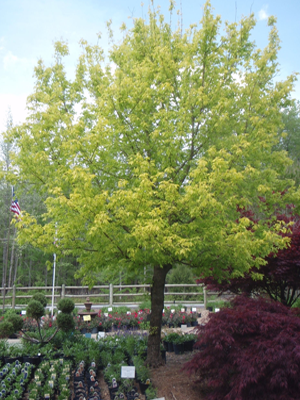
Acer negundo (Boxelder). Exposure: sun. Soil requirements: moist/wet. Deer resistance: low. Habitat: along water bodies. Specifics: Fast growing, weedy. Cultivars available for home gardens.
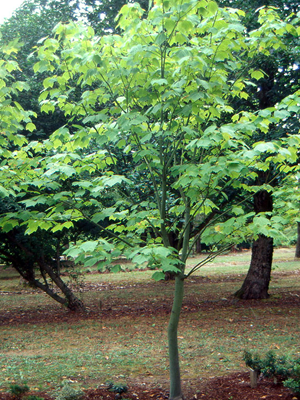
Acer pensylvanicum (Goosefoot/Striped maple). Exposure: part shade/shade. Soil requirements: medium. Deer resistance: low. Habitat: woodland/thickets/understory.
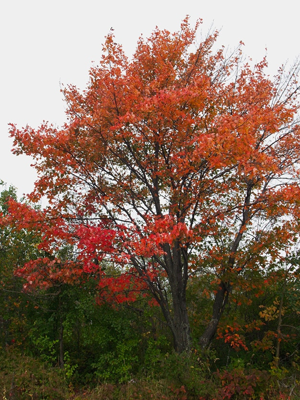
Acer spicatum (Mountain maple). Exposure: part sun/shade. Soil: moist /wet. Deer resistance: low. Habitat: slopes, along water bodies, understory. Specifics: Understory tree with multiple trunks and a mushroom-shaped habit. Important slope stabilizer.
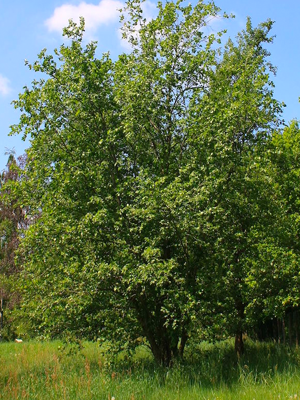
Alnus incana rugosa (Speckled alder). Exposure: sun/part sun. Soil requirements: medium/wet. Deer resistance: medium/high. Habitat: woodland/thickets. Specifics: Multi-stemmed, shrubby tree, pollinator powerhouse.
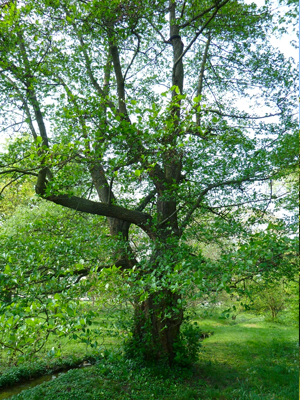
Alnus serrulata (Hazel/smooth alder). Exposure: part sun. Soil requirements: medium/wet. Deer resistance: low. Habitat: riversides or stream banks. Specifics: Shrubby, thicket forming. Important stabilizer and restorer of stream banks.
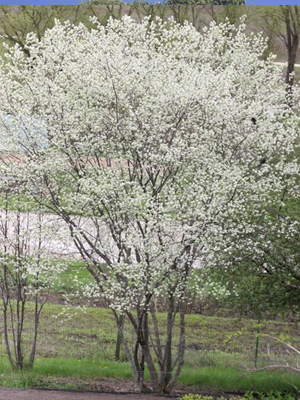
Amelanchier arborea (Downy serviceberry). Exposure: sun/part shade. Soil requirements: dry/medium/moist. Deer resistance: low. Habitat: woodland edge/urban landscapes. Specifics: Amelanchier species with the largest edible berries, suitable as street tree.
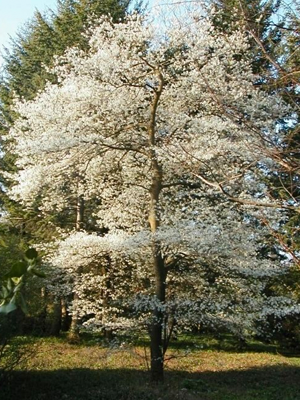
Amelanchier canadensis (Canadian serviceberry). Exposure: part sun. Soil requirements: dry/medium/moist. Deer resistance: low. Habitat: woodland-edge/urban landscapes. Specifics: Easy to grow, showy flowers and fruit, suitable as street tree.
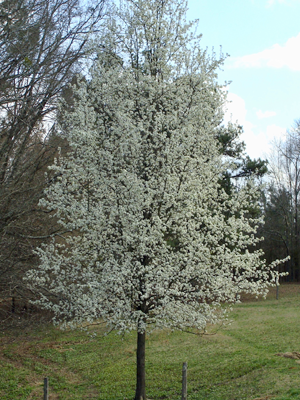
Amelanchier laevis (Shadbush). Exposure: sun/part shade. Soil requirements: dry/medium/moist. Deer resistance: low. Habitat: woodland-edge. Specifics: Tallest Amelanchier species, early flowers, red fruit, nice fall foliage, suitable as street tree.
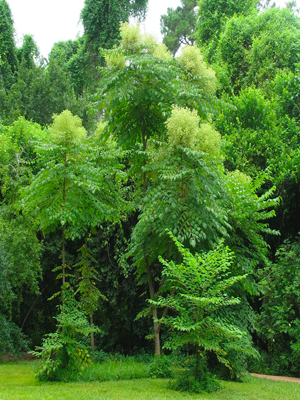
Aralia spinosa (Devil’s walking stick). Exposure: sun/shade. Soil requirements: moist/ wet. Deer resistance: high. Habitat: wetland/moist fields. Specifics: Careful! Don’t confused this with the invasive Aralia Elata! Dramatic tree, showy flowers, berries, deer are deterred by thorns.
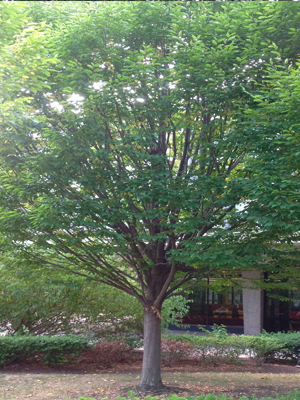
Carpinus caroliniana (American hornbeam, muscle wood). Exposure: part sun/shade. Soil requirements: average/moist. Deer resistance: low. Habitat: woodland/thickets/understory. Specifics: Wide growth habit, dark muscular bark. Suitable as street tree.
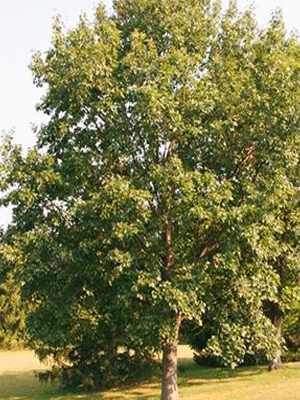
Castanea pumila (Allegheny chinquapin). Exposure: sun. Soil requirements: sandy/well drained. Deer resistance: low. Habitat: thickets/upland/slopes Specifics: Single- or multi-trunked. Glossy, dark green leaves, prickly fruit-husks, thicket forming, edible nuts.
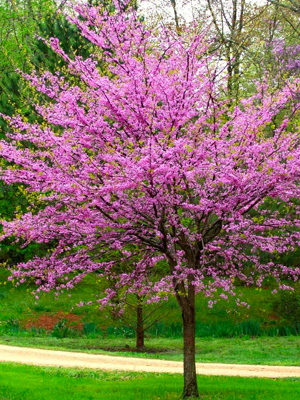
Cercis canadensis (Eastern redbud). Exposure: part sun/shade. Soil requirements: moist. Deer resistance: low. Habitat: woodland-edge/understory/urban landscapes. Specifics: Easy landscaping tree, colorful flowers and dramatic fall foliage. Grows wider than tall. Salt intolerant.
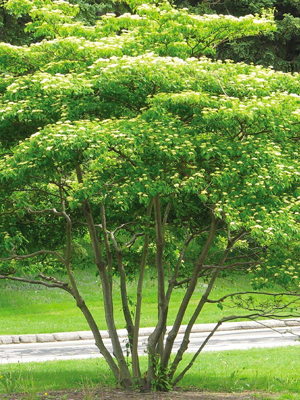
Cornus alternifolia (Pagoda dogwood) Exposure: part sun/shade. Soil requirements: moist/well drained. Deer resistance: medium. Habitat: woodland/understory/urban landscapes. Specifics: horizontal branching. Wide, flat-topped clusters white flowers become clusters of reddish-purple berries.
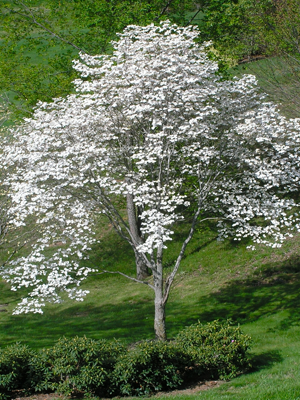
Cornus florida (Flowering dogwood). Exposure: sun/part shade. Soil requirements: dry/medium/moist. Deer resistance: low. Habitat: understory/urban landscapes. Very popular ornamental landscaping tree. Suitable as street tree. Copes well with climate change. Use Dogwood blight-resistant hybrid.
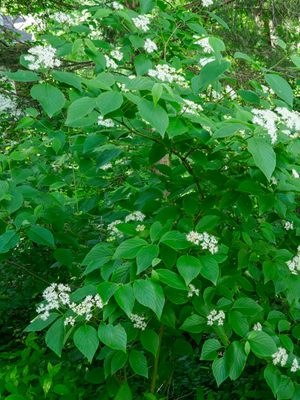
Cornus rugosa (Round-leaved dogwood). Exposure: part shade. Soil requirements: dry/ moist/ wet/sandy/rocky. Deer resistance: low. Habitat: Woodland/understory/urban landscapes. Specifics: Broad leaved and shrubby, suitable for woodland and rocky soils.
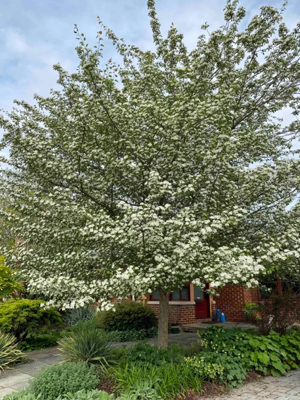
Crataegus spp. (Hawthorns). Exposure: sun. Soil requirements: dry/medium. Deer resistance: medium. Habitat: upland/fields/roadsides/urban landscapes. Specifics: This species is heavily hybridized. Easy ornamental landscaping tree, can form hedges. Thorns protect it from deer browsing.
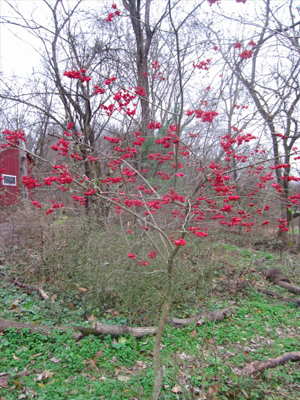
Euonymus atropurpureus (American wahoo). Exposure: sun/part sun. Soil requirements: moist. Deer resistance: low. Habitat: woodland/woodland edge/ Specifics: Interesting red-pink berries and red fall color. Can form hedge. Tolerates black walnut trees. Multiples needed for fruit production.
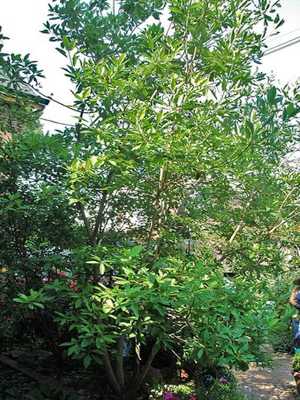
Magnolia virginiana (Sweet-bay magnolia). Exposure: part sun/shade. Soil requirements: moist/rich/acidic. Deer resistance: high .Habitat: woodland-edge/urban landscape. Specifics: Beautiful white flowers, semi evergreen, thick glossy leaves, good as a specimen or for borders.
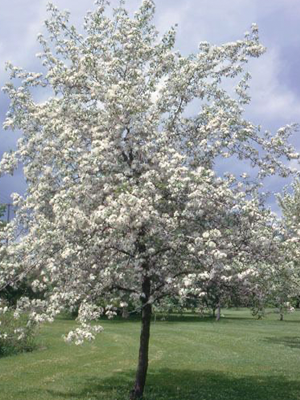
Malus coronarius (Crabapple). Exposure: sun. Soil requirements: dry/medium/moist. Deer resistance: low. Habitat: woodland-edge/urban landscape. Specifics: Many cultivars, fruit can be eaten, spur branches protect it from deer browsing..Commonly available at tree nurseries.
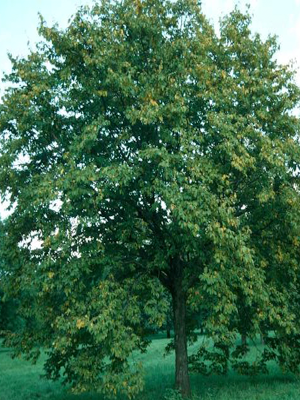
Ostrya virginiana (Ironwood/hop-hornbeam). Exposure: sun/shade. Soil requirements: dry/well drained. Deer resistance: low. Habitat: woodland/thickets/slopes. Specifics: Best for side and back yards. Shaggy bark, interesting clustered flowers, intolerant of salt.
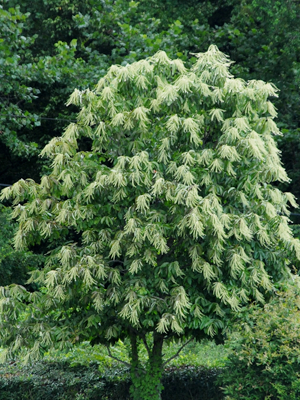
Oxydendrum arboreum (Sourwood). Exposure: sun/part shade. Soil requirements: moist/rich/well drained/acidic. Deer resistance: high. Habitat: upland woodland. Specifics: Multi-season interest, small specimen tree.
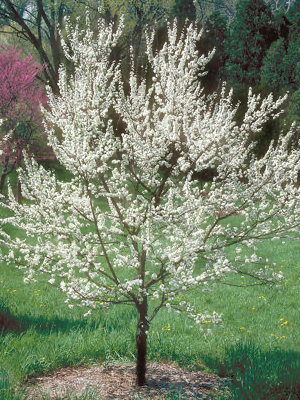
Prunus americana (American plum). Exposure: sun. Soil requirements: moist. Deer resistance: low. Habitat: woodland edge/fields. Specifics: small ornamental tree, many cultivars, shade intolerant, fast growing, can be shrubby..Commonly available at tree nurseries.
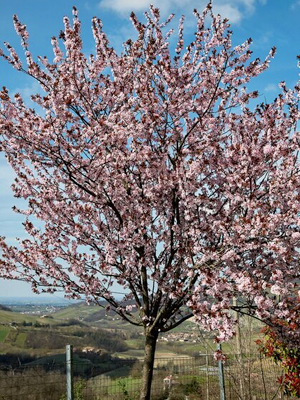
Prunus nigra (Canada plum). Exposure: part sun. Soil requirements: moist/rich. Deer resistance: low .Habitat: woodland edge/fields. Specifics: small ornamental tree, thorns protect it from deer browsing. Many P. nigra trees are cultivated for dark red leaves, terrific street tree..Commonly available at tree nurseries.
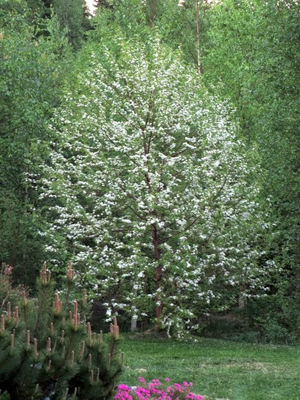
Prunus pensylvanica (Pin cherry ). Exposure: sun. Soil requirements: dry/poor. Deer resistance: low. Habitat: woodland edge/fields. Specifics: small ornamental tree, slender, can be shrubby, bright red fruit.
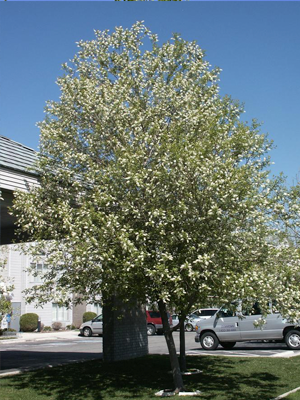
Prunus virginiana (Choke cherry). Exposure: sun. Soil requirements: dry/medium/moist. Deer resistance: low. Habitat: woodland/thickets/urban landscape. Specifics: Small understory tree, easy to grow, shrubby, suitable as street tree .Commonly available at tree nurseries.

Rhus glabra (Smooth sumac). Exposure: sun. Soil requirements: dry/poor. Deer resistance: high. Habitat: woodland-edge/roadsides. Specifics: Colony-forming short, crooked, leaning trunks and picturesque branches. Sharp-toothed leaflets, interesting seed heads, Nice fall color, cultivars have been developed for garden use.
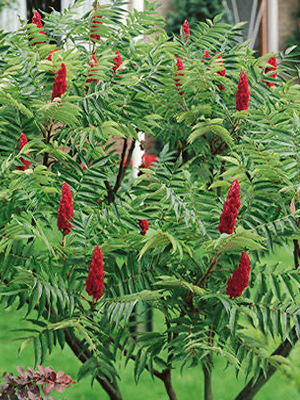
Rhus typhina (Staghorn sumac). Exposure: part sun. Soil requirements: medium/dry. Deer resistance: high. Habitat: field-roadside/thickets. Specifics: Colony-forming short, crooked, leaning trunks and picturesque branches. sharp-toothed leaflets, interesting seed heads. Fall color.

Salix discolor (Pussy willow). Exposure: part sun. Soil requirements: moist/wet. Deer resistance: high. Habitat: wetland/along water bodies/urban landscapes. Specifics: wet soil, interesting catkins, nice modest, wildlife friendly landscaping tree. Commonly available at tree nurseries.
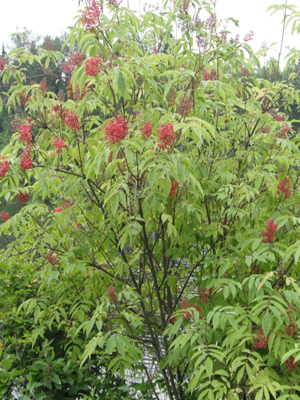
Sambucus racemosa (Red berry elderberry). Exposure: shrub/small tree Soil requirements: shade Deer resistance: low Habitat: wetland/flood plains Specifics: Very shrubby, suckering, showy fragrant flowers, colorful berries, hybridized with European Sambucus.
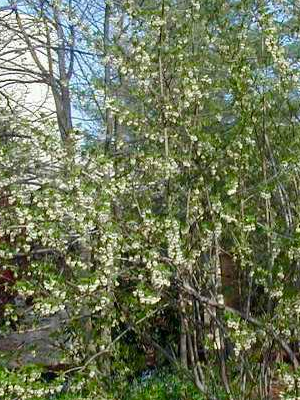
Staphylea trifolia (Bladdernut). Exposure: part shade/shade. Soil requirements: dry/medium. Deer resistance: low. Habitat: rich soil, woodland. Specifics: Shrubby, suckering, bell-shaped flowers in drooping clusters, drought resistant. Fast growing. No serious insect or disease problems.
Source: Healthy Yards www.healthyyards.org Questions? Contact us at info@healthyyards.org